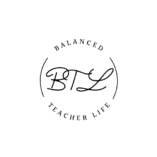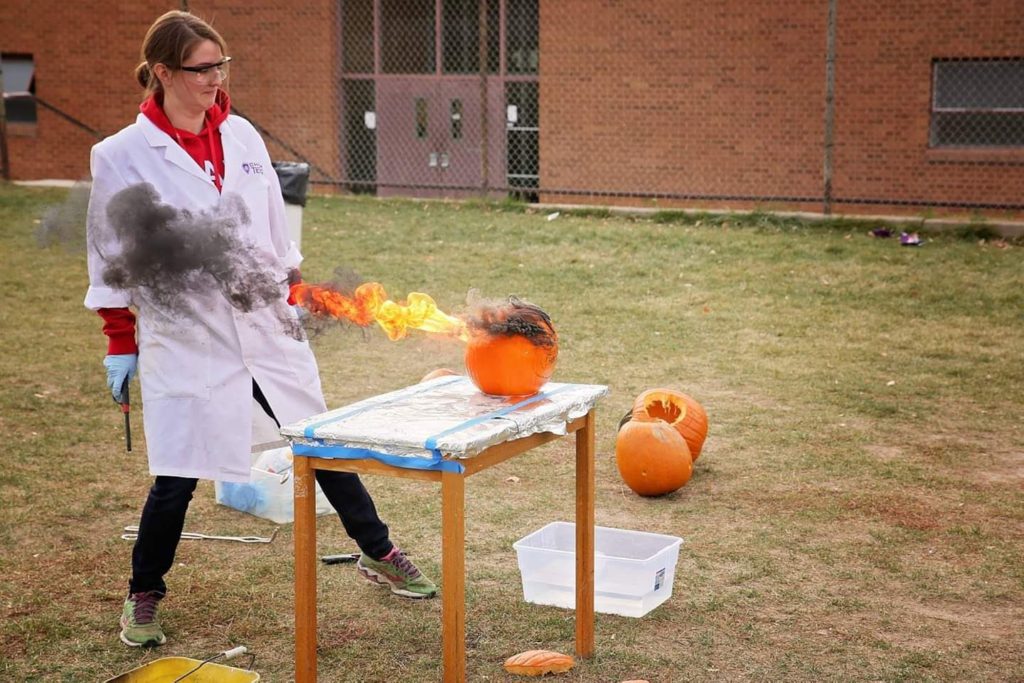Flexible, Fun & Free writing skills Activity for any Subject!
Today I’m excited to share one of my favorite lessons with all my followers! I call it “Alien Invasion!” This writing skills activity helps students develop crucial skills like descriptive vocabulary, concise language, and revision. I love this lesson because it focuses on developing writing skills that are applicable to many different content areas!
- Science: I use this lesson to teach my students the importance of writing an accurate and detailed procedure for their experiments.
- Language Arts: Teachers at my school do a variation of this lesson to practice descriptive writing.
- General Classrooms: I’ve used this lesson in my college prep class to teach students the importance of annotating, editing, and revising their work. These are such valuable skills for helping students develop a growth mindset!
The applications are seriously limitless. It is so easy and so fun! In the next section, I will describe the lesson from a science perspective, since that was my main content area. But keep in mind that the lesson easily adaptable by simply changing the essential question and learning goals
Alien Invasion Lesson Description
Summary: Students will draw an alien and create instructions for how to draw it. Next, their instructions will be put to the test as other students try to draw the alien! Revisions will be allowed before each round.
Time Required: Flexible to your needs. For my classroom, I use one 70 minute class period.
Materials Needed:
- 3 to 5 pieces of blank paper per student
- Writing utensils
- Colored pencils or markers
- Optional: Document camera for whole-class sharing after the activity. I have an older version of this one and it works great for the cost.
- Optional: Download my free slides for this activity! Click here to download: Alien Invasion Writing Skills Activity
Essential Question (for science):
Why do scientists keep detailed laboratory notebooks?
Learning Goals (for science):
- Students can write a detailed procedure and identify areas that need improvement/revision.
- Students will understand the importance of keeping detailed notes and apply this to experimental repeatability.

Easy steps for teaching this lesson
You can download my free & editable “Alien Invasion Slides” to use in your classroom (see preview below)! Each slide outlines the different steps in the process.
I’ve also provided a description of each step below for quick skimming.
Step 1: Draw an Alien on a blank page. Students must keep their drawing a secret from those around them.
Step 2: Instruct the students to write a step-by-step procedure for how to draw their alien. Be sure students create these instructions on a separate piece of paper!
Step 3: Organize students into partners, and have them exchange their INSTRUCTION PAGE ONLY, still keeping their alien drawing hidden from view. Each student will try to draw their partner’s alien based ONLY on the written instructions. Allow students to reveal their original drawing to their partner ONLY after they have followed all the instructions.
Step 4: After comparing their drawings, have each student annotate their partner’s instructions (highlight helpful words, circle steps or words that were unclear, etc) with suggestions that will improve future attempts.
Step 5: Discuss the importance of improving and revising your work with the class. Then, have each student revise their original instructions.
Step 6: Repeat the activity with a new partner, as many times as you would like! I usually do 2-3 rounds at most.
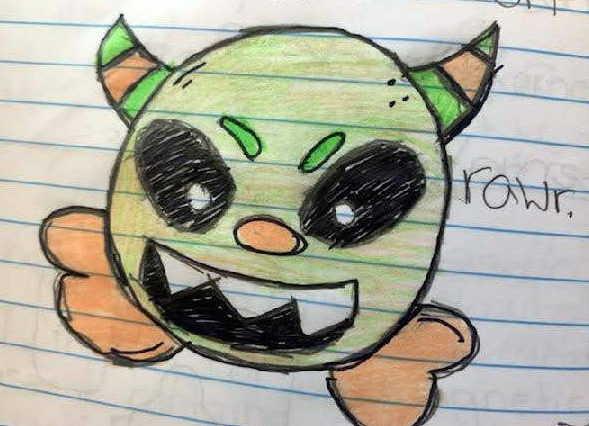
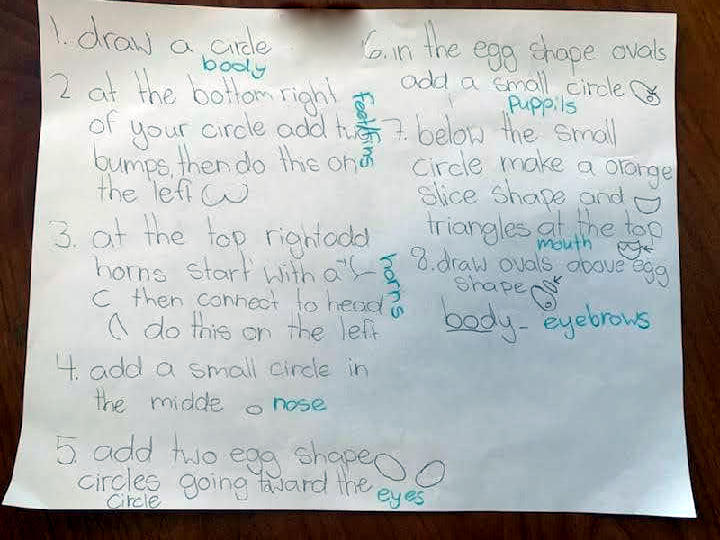
Wrapping it Up - creating opportunities for students to reflect
- Sharing Their Work: Using my document camera, I like to choose a few students to share all the different versions of their alien (the original plus each partner’s attempt). Alternatively, have students hang up their drawings around my room and do a quick gallery walk!
- Make it a Competition: Let the students vote for the drawings that they think turned out the closest to the original. Give each student a few stickers to cast their vote on the gallery walk! So much fun!
- Class Discussion Take a few minutes to discuss this writing skills activity with your students. I usually center the discussion around the question: “How does this activity apply to science?” It’s amazing the connections that the students are able to make! As we move forward into designing experiments, my students will often refer back to their experience with this activity.
- Reflection Questions: Give students time to reflect using the questions on the last slide. Typically, I will put these questions into a quick Google Form exit ticket. I am a HUGE fan of digital exit tickets and utilize them pretty much daily. For more ideas on this topic, watch for my upcoming post on how to use exit tickets effectively in the classroom!
Why I Love This Writing Skills Activity
- Builds positive culture – this activity gets students laughing, and encourages positive peer interactions. As we know, building relationships is #1 in my Top 4 Secrets of Successful Junior High Teachers! Click here to learn the other 3 secrets!
- High engagement
- Student-led – As students work, I am able to walk around and give tons of positive feedback. This activity opens up opportunities for me to build stronger relationships with my students as we connect about their artwork.
- Creative!
- Reflective – Students remember this activity all year. I refer back to it often, especially when students turn in work that could use a little more effort.
- Focuses on developing skills rather than learning facts
- Flexible time frame – You can do as many or as few rounds as you need to fit your time frame.
- Inexpensive and requires minimal planning
Management Tips - Use pacing to help it go smoothly!
One of the challenges with this activity (and artsy project I’ve ever done in the classroom) is TIME. You will have amazing artists who want to spend 30 minutes on their alien, and others with skills equivalent to my own. I’m seriously the worst at drawing. Ask me about the time I tried to draw a thermometer on the board… It went horribly, terribly wrong!
Pacing is crucial, so set timers! I like to utilize roughly 10 minute chunks for each step.
In my slides, I have embedded timers into each step to help with pacing. The slides are also editable, so should be easy to adjust to your own bell schedule.
Differentiation
Allow language learners to verbalize their instructions rather than writing. You could also have them draw diagrams for their instructions! Pair your students intentionally for success. For more ideas, watch for my upcoming post on creative partnering strategies.
Extensions
For high level learners, I typically have students complete extra rounds with new partners or create a second, more complex alien. This is simple and self-directed so I can stay focused on helping lower-level writers/readers. You might also consider incorporating some non-drawing extensions, like those described in the “More Ways to Practice” section below.
Student Examples

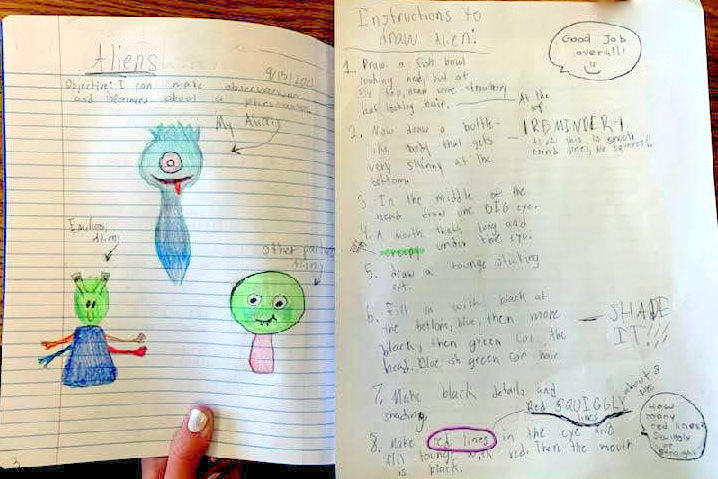
More Ways to Practice Writing Skills
- PB&J version – A teacher I work with uses this same concept to have students help her build a peanut butter and jelly sandwich. Students create instructions as a class, which the teacher follows very literally. For example. if a student says “Get some peanut butter” then the teacher might reach into the jar with their hand and scoop some out. This gets pretty silly and fun! Personally, I prefer the aliens because there is more individual accountability for students, it’s less messy for me, and I don’t have to buy/remember to bring PB&J ingredients to school.
- Blueprints version – Since we often do engineering design challenges in science, a fun variation of this activity would be to have students build something out of Legos, then trade blueprints and see if another team can build their same structure.
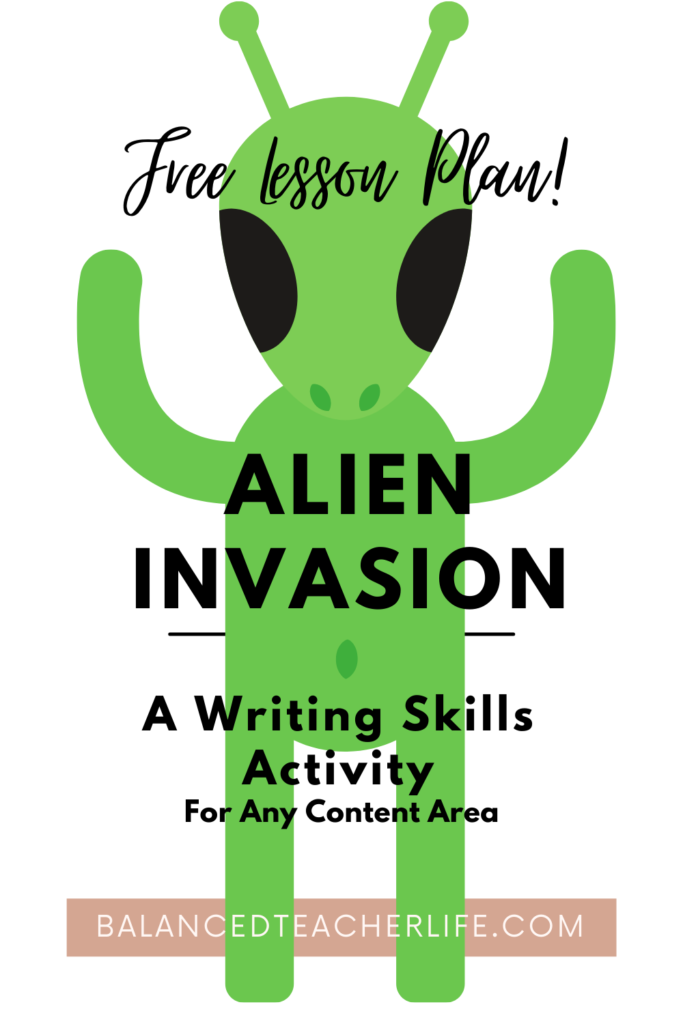
What do Writing Skills activities look like in your classroom?
I would LOVE to hear your feedback for this lesson, and your ideas for embedding additional writing skills activities in your classroom!
How did this lesson go? What other variations have you tried in your classroom? Did you feel that this activity helped create a more positive culture in your classroom? Please share in the comments!
And if you loved this lesson, check out more fun activities in my science lesson library!

